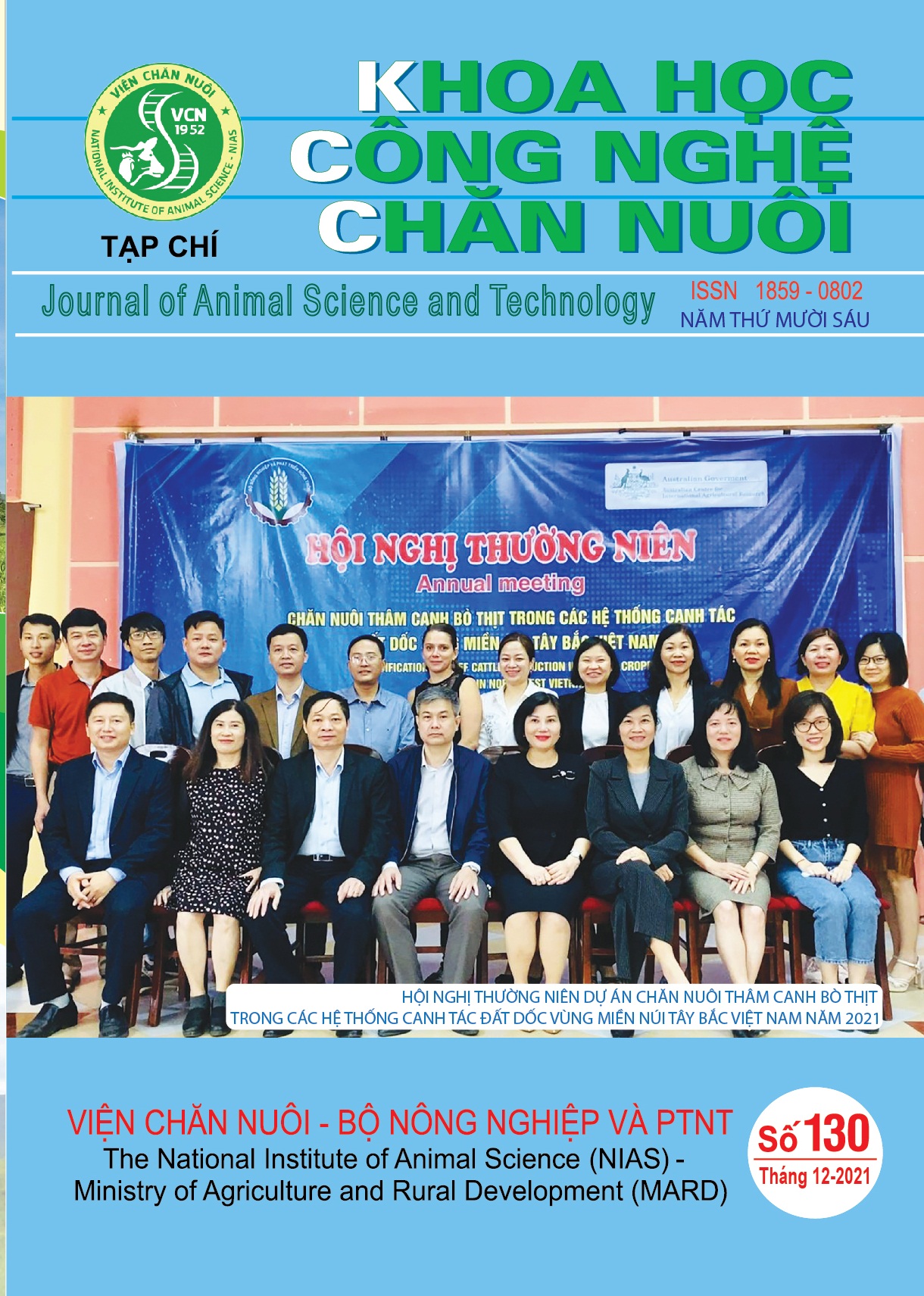Ảnh hưởng của ngô sinh khối ủ chua, cỏ voi và rơm lúa trong khẩu phần ăn đến tỷ lệ tiêu hóa toàn phần và sinh trưởng của bò thịt nuôi ở Thừa Thiên Huế
Two experiments were condted to determine the effects of diets consisting of silage maize HQ2000, fresh elephant grass and dried rice straw combined with different ratios on total digestibility, growth performance and feed conversion ratio in cows. In Experiment I (TNI), 12 local male cattle with an average weight of 152 kg were randomly arranged in Latin squares (4 x 4), corresponding to 4 diets and 4 periods. Four diets were combined with 50% compound feed and the remaining 50% various roughage (DM). The amount of roughage in diet KP1(N100) was 100% maize silage, in KP2(N50V50) was 50% maize silage and 50% elephant grass, in diet KP3(V50R50) was 50% elephant grass and 50% rice straw, and in diet KP4(V100) was 100% fresh elephant grass. The experimental lasted 40 days, of which 10 days in each period included 5 days of adaption to each diet and 5 days of collection of feces. In Experiment II (TNII), 20 beef local cattle with an average weight of 163 kg were randomly located to 4 groups corresponding to 4 experimental diets as in TNI. Cattle were kept in pens individually and fed at the daily feed intake 3% of body weight (in DM). The experiment lasted 9 weeks, in which the first week cattle adapted to diets and feeding, then 8 weeks following the experimental diets. Experiment TNI showed that the digestibility of DM, OM, CP, NDF and ADF in the diets KP1(N100), KP2(N50V50 and KP4(V100) was significant higher than that in diet KP3(V50R50) (P<0.05). There was no difference between diets KP1(N100), KP2(N50V50) and KP4(V100). In experiment TNII, the ADG of cattle from week 6 to week 8 in diets KP1(N100), KP2(N50V50) and KP4(V100) repectively 850, 831 and 808 g/day, was higher than that in diet KP(V50R50) 635 g/day, similary throughout the 8-week period of the experiment (P<0.05). FCR was significantly different between diets, the lowest in KP1(N100), KP4(V100) and KP2(N50V50) 4.62; 5.23; 5.52, respectively, compared to KP3(V50R50) 6.84 (P<0.05).

